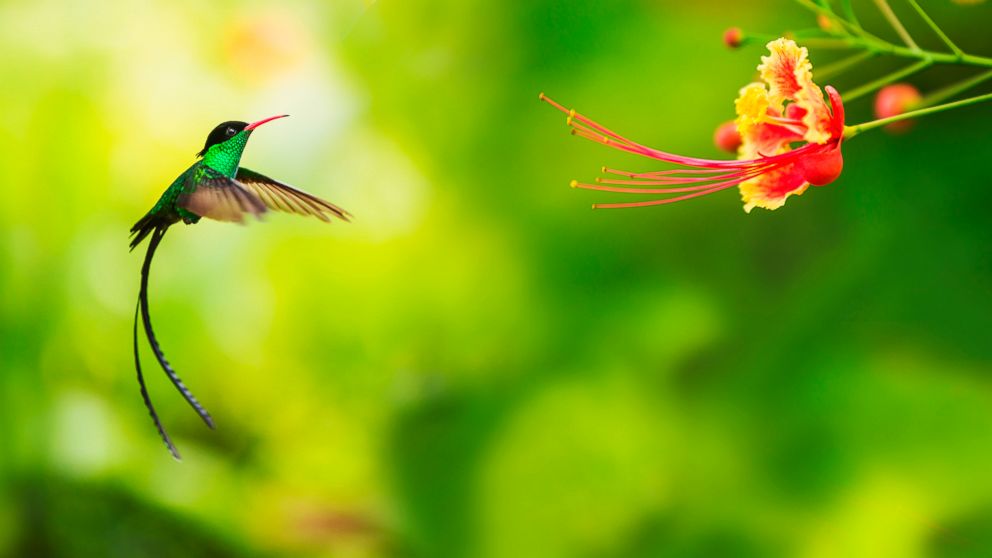How the Clever Hummingbird Tortures Scientists

April 13, 2014— -- Nature loves complexity. The tiny hummingbird has amazed, inspired and baffled scientists down through the ages, and now it has added another mystery to its legacy.
Hummingbirds are believed to have originated in Europe or Asia around 40 million years ago, but scientists, using genetic evidence, have now pieced together part of their family tree and concluded that they eventually emigrated to South America. The question is, how did they get there?
"They colonized South America by 22 million years ago," biologist Jimmy McGuire of the University of California, Berkeley, lead author of a new study in the journal Current Biology, said in a telephone interview. "We don't know exactly when they arrived, but when they first arrived there probably weren't any plants that were particularly adaptable for hummingbirds."
That set in motion a symbiotic relationship between hummers and flowers that led to the explosive growth of hummingbirds in South America, even in areas that are still inhospitable for these amazing birds.
McGuire's team has identified 140 different hummingbird species in the towering Andean mountains alone, even at 15,000 feet elevation where the air is so thin that flying is, to put it mildly, very difficult.
Hummingbirds live primarily on flower nectar, with a smattering of insects, and as they poke their long beaks into the flowers they also collect pollen, which they spread throughout the area, so the plants and the birds both benefit from the process through co-evolution. The more hummers, the more plants, and the more plants, the more hummers.
Millions of years ago hummingbirds lived in much of Europe and Asia, but today they are only in the Americas, and they seem to like it here. The oldest modern hummingbird was discovered in Germany and it lived more than 30 million years ago, which is why many scientists think that's where their journey began. But to where, and how?
They can fly over water, but not too far. The modern ruby-throated, rufous and black-chinned hummers migrate across the Gulf of Mexico from the southern shores of North America to Central America, but many don't make it -- possibly as many as one half.
And that's not nearly as far as the distance between Europe or Asia and South America.
That has led McGuire and his colleagues to "speculate," as he put it, that the first hummingbirds to arrive in the Americas probably came across the Bering Strait land bridge into North America, the same path the first humans are believed to have followed.
But that leaves many questions unanswered.
It would have been an incredibly difficult trip for hummers, despite their obvious robustness, with precious little to eat along the way.
The land bridge would only have been there during times of "glacial maximum," when so much sea water was taken up during one of many ice ages that the seas dropped so low the bridge stood above the water. That was a very inhospitable environment for man and beast, much less hummingbirds.
Could they simply have originated here? Researchers at the Field Museum of Natural History in Chicago reported last year that they had found a 50-million-year-old fossil of a tiny bird in southwestern Wyoming, and when they compared it to extinct and modern day birds they concluded it was an evolutionary precursor to today's hummers and swifts, another group of extraordinary flyers.



